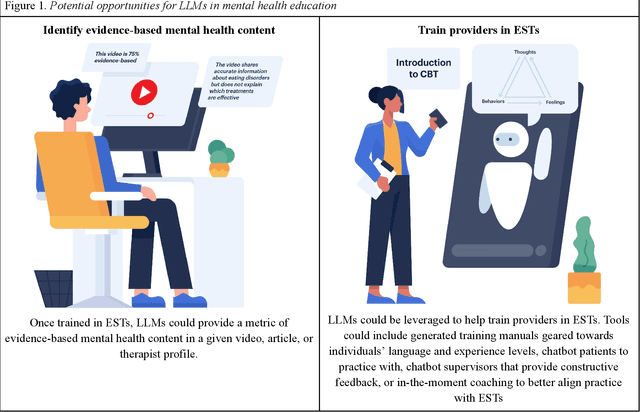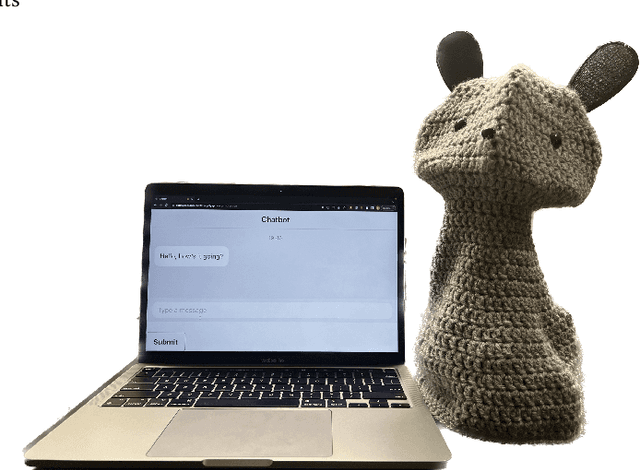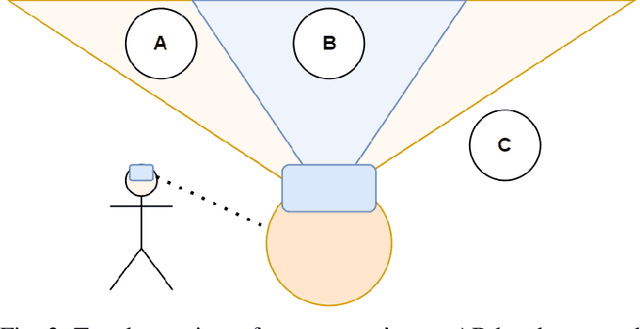Maja J. Mataric
The opportunities and risks of large language models in mental health
Mar 26, 2024



Abstract:Global rates of mental health concerns are rising and there is increasing realization that existing models of mental healthcare will not adequately expand to meet the demand. With the emergence of large language models (LLMs) has come great optimism regarding their promise to create novel, large-scale solutions to support mental health. Despite their nascence, LLMs have already been applied to mental health-related tasks. In this review, we summarize the extant literature on efforts to use LLMs to provide mental health education, assessment, and intervention and highlight key opportunities for positive impact in each area. We then highlight risks associated with LLMs application to mental health and encourage adoption of strategies to mitigate these risks. The urgent need for mental health support must be balanced with responsible development, testing, and deployment of mental health LLMs. Especially critical is ensuring that mental health LLMs are fine-tuned for mental health, enhance mental health equity, adhere to ethical standards, and that people, including those with lived experience with mental health concerns, are involved in all stages from development through deployment. Prioritizing these efforts will minimize potential harms to mental health and maximize the likelihood that LLMs will positively impact mental health globally.
Can an LLM-Powered Socially Assistive Robot Effectively and Safely Deliver Cognitive Behavioral Therapy? A Study With University Students
Feb 27, 2024



Abstract:Cognitive behavioral therapy (CBT) is a widely used therapeutic method for guiding individuals toward restructuring their thinking patterns as a means of addressing anxiety, depression, and other challenges. We developed a large language model (LLM)-powered prompt-engineered socially assistive robot (SAR) that guides participants through interactive CBT at-home exercises. We evaluated the performance of the SAR through a 15-day study with 38 university students randomly assigned to interact daily with the robot or a chatbot (using the same LLM), or complete traditional CBT worksheets throughout the duration of the study. We measured weekly therapeutic outcomes, changes in pre-/post-session anxiety measures, and adherence to completing CBT exercises. We found that self-reported measures of general psychological distress significantly decreased over the study period in the robot and worksheet conditions but not the chatbot condition. Furthermore, the SAR enabled significant single-session improvements for more sessions than the other two conditions combined. Our findings suggest that SAR-guided LLM-powered CBT may be as effective as traditional worksheet methods in supporting therapeutic progress from the beginning to the end of the study and superior in decreasing user anxiety immediately after completing the CBT exercise.
Augmented Reality Appendages for Robots: Design Considerations and Recommendations for Maximizing Social and Functional Perception
May 13, 2022



Abstract:In order to address the limitations of gestural capabilities in physical robots, researchers in Virtual, Augmented, Mixed Reality Human-Robot Interaction (VAM-HRI) have been using augmented-reality visualizations that increase robot expressivity and improve user perception (e.g., social presence). While a multitude of virtual robot deictic gestures (e.g., pointing to an object) have been implemented to improve interactions within VAM-HRI, such systems are often reported to have tradeoffs between functional and social user perceptions of robots, creating a need for a unified approach that considers both attributes. We performed a literature analysis that selected factors that were noted to significantly influence either user perception or task efficiency and propose a set of design considerations and recommendations that address those factors by combining anthropomorphic and non-anthropomorphic virtual gestures based on the motivation of the interaction, visibility of the target and robot, salience of the target, and distance between the target and robot. The proposed recommendations provide the VAM-HRI community with starting points for selecting appropriate gesture types for a multitude of interaction contexts.
 Add to Chrome
Add to Chrome Add to Firefox
Add to Firefox Add to Edge
Add to Edge